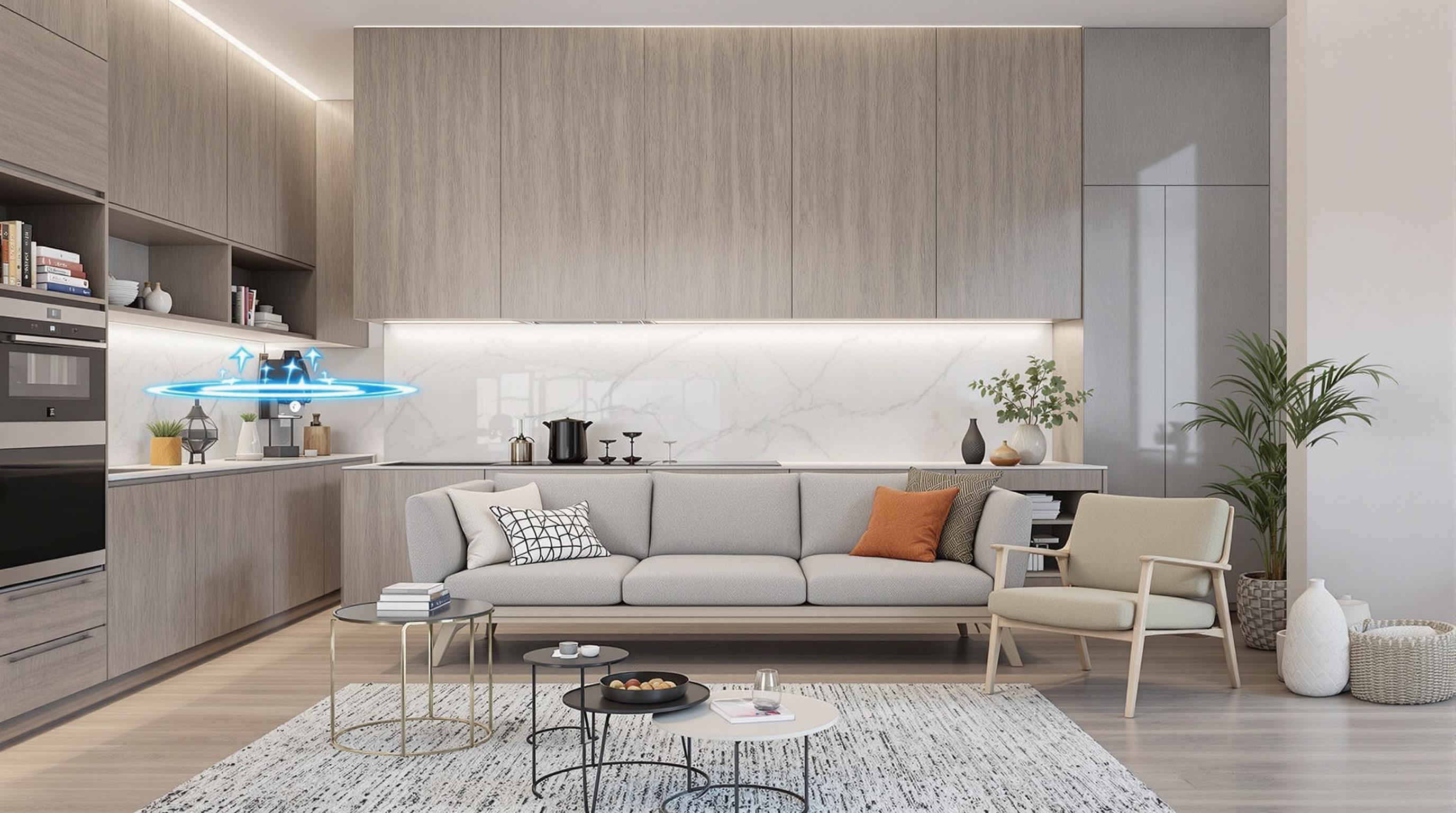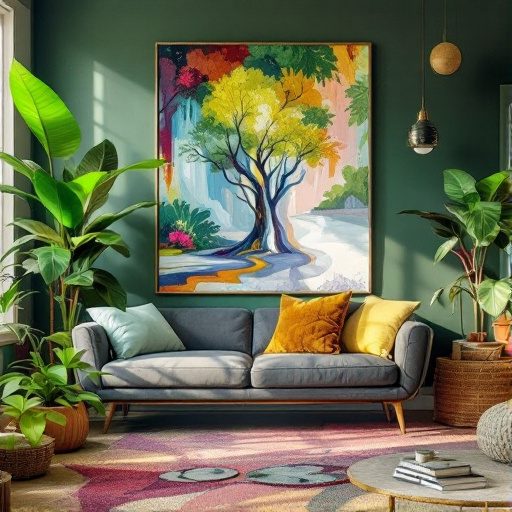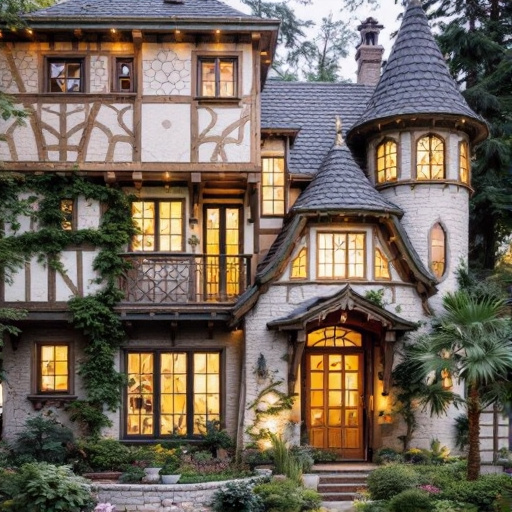Featured Articles
- "Decoding the Mystery: How Folklore Influences Modern Home Designs in Unexpected Ways"
- Reimagining Ruins: How Abandoned Spaces Are Inspiring Modern Home Designs and Eco-Conscious Living
- Reimagining Spaces: How Biophilic Design Can Transform Mental Health in Your Home
- Reviving the Past: How Retro Futurism is Reshaping Modern Home Design with a Twist of Nostalgia
- Revolutionizing Spaces: How Biophilic Design is Transforming Urban Home Environments into Nature-Infused Sanctuaries
Reimagining Ruins: How Abandoned Spaces Are Inspiring Modern Home Designs and Eco-Conscious Living
Reimagining Ruins: How Abandoned Spaces Are Inspiring Modern Home Designs and Eco-Conscious Living
Abandoned spaces are experiencing a renaissance, as architects and designers draw inspiration from their unique stories and aesthetics. This article delves into how these ruins can spark modern home designs that embrace eco-conscious living and a reverence for history.
Embracing the Beauty of Decay
What is it about the beauty of dilapidation? The concept of “found beauty” is becoming an integral part of modern architecture; it’s all about embracing the imperfect charm that ruins offer. The aesthetic appeal of peeling paint, crumbling brick, and rusting metal can add character to otherwise sterile environments. A 2021 survey by the American Institute of Architects found that 54% of architects believe that eco-conscious designs are inspired by the incorporation of existing structures and materials (AIA, 2021).
A Story Worth Telling
As much as we look at abandoned spaces for their physical structure, each ruin carries a story waiting to unfold. A great example is the “High Line” in New York City, which transformed a decrepit railway line into an elevated park that offers lush greenery and a communal space for people. This adaptive reuse not only retained the historical integrity of the site but also promoted eco-friendly practices by converting urban wasteland into greenery (Friends of the High Line, 2020). By carrying forward these stories into modern designs, today’s architects invite a narrative element that attracts a younger demographic who values sustainability and history.
Breezy Living: Incorporating Nature
Modern home trends are increasingly leaning towards biofilia, which connects humans with nature—a notion that’s intrinsic within the idea of reusing old spaces. According to a 2022 study published by Building and Environment Journal, homes designed with biophilic elements saw a 15% increase in occupant satisfaction (B&E Journal, 2022). By incorporating large windows or using salvaged wood, designers manage to merge interior living with outdoor elements. Imagine waking up in a reimagined industrial loft, sunlight filtering through the large, rusted window frames, blending history with modern aesthetics—a dream, right?
Less is More
Minimalism often leads us back to the concept of “less is more.” When considering homes in abandoned locations, the focus tends to shift towards functionality and utility. Rachael, a 29-year-old architecture student, sums up her passion: “The less you need, the more space amid history allows you to breathe.” In a world drowned in consumerism, living in spaces that already exist helps to reduce the demand for new construction, thereby lowering the carbon footprint significantly. The concept of multi-purpose spaces is gaining traction, resonating with the minimalist lifestyle that many seek today.
Case Study: The Adaptive Reuse of Factories
Take for instance the repurposing of factories into modern residences, such as the Turner Warehouse in Baltimore. Once a bustling hub of industry, it now boasts sleek condominiums that preserve the industrial charm while meeting contemporary aesthetic requirements. With exposed beams and original brickwork, the project captured local history while offering unique living spaces that feel both modern and timeless (Baltimore Development Corporation, 2021). More than 30% of city-dwellers prefer to live in such unconventional spaces, as per local housing surveys—a living testament to the allure of historical buildings.
Mindfulness and Sustainability
Let’s talk eco-conscious living! In a world grappling with climate change, reimagining ruins serves not only as design inspiration but also as a mindful approach to sustainable living. By recycling materials from existing structures and minimizing waste, architects can design homes that possess lower environmental footprints.
Engaging the Community
But it’s not just about the walls and the wood; it’s also about the community aspect of these spaces. Revitalizing an abandoned building often encourages neighborhood engagement, fostering a sense of belonging among residents. For example, the transformation of the old railway depot in Richmond, Virginia, into a community center allowed local artists to showcase their work while giving a new life to a previously forgotten space. Utilizing abandoned spaces for community use is a grassroots movement that many cities are now adopting.
Remnants of the Past in Modern Spaces
Sometimes, it’s the remnants of a past life that planners want to highlight. Striking a balance between history and modernity can be tricky; however, with growing trends in blend designs—such as using old ship containers in home building—new aesthetics are emerging. The newest trend also encourages DIY culture, where young adults go some way towards building their own homes using reclaimed materials from local ruins. Young creators are actively making smarter choices, opting to refurbish instead of demolish.
Laughter in Abandonment
And let’s not forget the added charm of DIY projects! If history is any indicator, it shows that the most interesting decor often comes from quirky pieces found in neglected spaces. “That ‘rustic chic’ lamp in my living room? It’s made from an old bike wheel I found in the barn behind my house,” chuckles Max, a 34-year-old self-proclaimed urban archaeologist. This trend bridges affordability with creativity and adds a sprinkle of humor—after all, nothing beats telling a visitor that your dining table was once part of a bowling alley.
Changing Mindsets
It’s important to note that reimagining ruins not only offers aesthetic and ecological benefits but also contributes to shifting mindsets. For younger generations, living sustainably is no longer an option but a necessity. The buyers of the future are making purchasing decisions based on ethical considerations, and developers that engage with historical contexts aren’t just catering to nostalgia; they’re paving the way for renewable future sustainability models.
Statistics to Ponder On
Are you ready for some mind-boggling stats? According to the National Trust for Historic Preservation, nearly 20% of all available housing can be classified as recovered, reused, or rehabilitated structures. Moreover, new housing built on recently abandoned sites conserves up to 25% more resources compared to traditional construction (NTHP, 2023). Walking through a reimagined space isn’t just a journey through history; it’s a pledge to a greener future.
Conclusion: Reflecting on A New Era
The vision of modern home designs is increasingly grounded in a recognition of the past, creating a balance where abandoned spaces inspire eco-conscious living practices. We are witnessing an architectural renaissance that intertwines history, sustainability, and individuality. As we venture into this brave new world, let us rethink our relationship with our built environments and remember that the stories of yesterday are the foundations for tomorrow.




